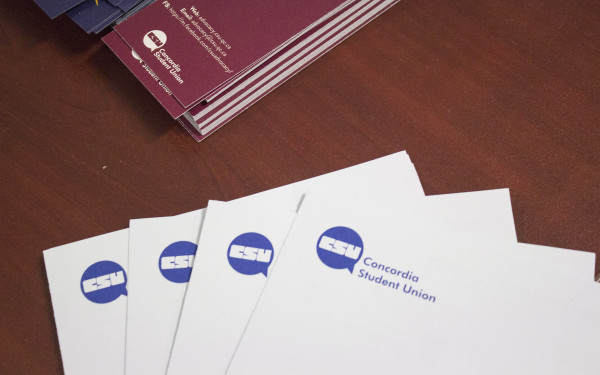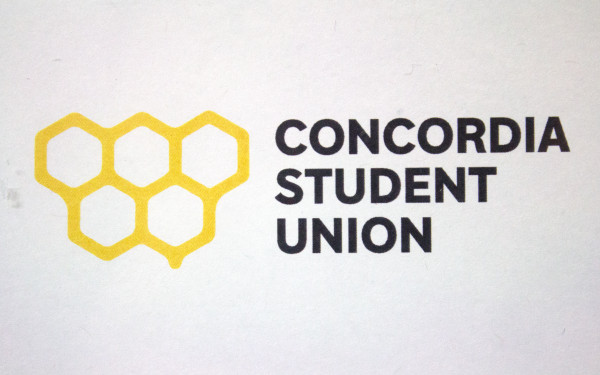CSU resumes work on long sought-after student centre
Council seeks student favour for multi-generational project in upcoming referendum
In the March 16-18 referendum, students will be asked to vote on whether they support a Concordia Student Union initiative to acquire a site for a student centre. According to the referendum question, passed on Feb. 10 in a CSU general meeting, it will be located near the Sir George Williams campus.
“I think it would be a great resource for both the CSU and the student body to have access to,” said general coordinator Isaiah Joyner. “There are so many different student clubs, groups, associations, subsidiaries—there’s so many things that can happen, but we have to do them off campus because we can’t get space on campus. A centre would help students do what they need to do.”
Both the CSU and Concordia have signed a non-disclosure agreement and cannot divulge specific information at this time. However, internal coordinator Daniel Amico claims the project’s committee has settled on a location.
“Because of the NDA, I can’t say if we’re renting or if we’re owning the building,” said Amico. “Where we’re at now, I think we’re pretty much set on it.”
Regardless of how it is acquired, the centre would not be owned independently from the university, according to Joyner. Joyner has not said at this time what the university’s role in the project will be, describing them as “a partner in this endeavour.”
“It’s in their best interest. These student buildings increase university rankings, serve as selling points to students, and elevate that ‘next-gen university’ feel that they’re striving for.”
It is also unclear how much the project will cost. The union’s Student Space, Accessible Education, and Legal Contingency Fund, or SSAELC fund, exists to finance large-scale projects like the creation of a student centre. The fund is amassed from student fee-levies, which are then invested into stock holdings. As of 2018, the SSAELC fund was valued at $10 million.
“I know it will be years from now until it’s built, but when it does get made, I think that clubs are really going to benefit from it, and students also.” — Daniel Amico
Even so, it is unlikely that the fund will completely foot the bill.
“The SSAELC will cover part of it, but there’s always been a plan to have a student building fee-levy for the building to be maintained,” said Amico. “We’re trying to make sure it’s affordable.”
The most recent development in the Union’s student centre saga came in 2019, when negotiations to purchase a building on the corner of Maisonneuve and Mackay St. fell through. But talks of a student centre began much earlier, according to union members. Most place the project’s inception in the late 1990s, with efforts to make it a reality resurfacing every few years.
In a March 2009 referendum, the Vision slate, a faction that diverged from the main executive party at the time, promised students that it would kick off the planning and construction of a new student centre. In March 2010, the Fusion slate finalized its predecessor’s plan, promising to open the $43 million building by January 2011. This went against the university’s opening date, which was sometime in 2015.
Also integral to Fusion’s student centre was a $4.50 per-credit fee—$405 in total for a 90-credit student. In the end, 72 per cent of students voted against the student centre. VP of Sustainability and Projects Alex Oster blamed the centre’s poor reception on its high price.
In November, the student centre question was brought back to referendum. This time, the CSU asked students to pay a $0.50 per-credit fee levy that would increase for four semesters until it reached $2.50 in 2012. This, coupled with the $2 students were already contributing to the student centre fund, would bring the project’s cost back up to $4.50, the same amount that students had rejected only a few months before. Although the question passed in council, many union members were confused with how it was worded and concerned that it would mislead students.
_700_1054_90.jpg)
As the campaign continued, it became clear that other details of the project were not as they appeared. For instance, advertisements for the centre claimed that students would retain much of the project’s decision-making power. On paper, however, Concordia lay claim to full ownership of the building. The centre’s board of directors was also subject to a list of regulating policies that would restrict student control.
It was also unclear, in the lead-up to the Nov. 24 referendum, where exactly the building would be located. VP External and Projects Adrien Severyns maintained that several options were still on the table in an interview he gave a week before the vote.
That changed on Nov. 17, when councillor Lex Gill revealed that the student centre would be housed in the Faubourg shopping mall.
This was not the first time that the Faubourg had come up in a CSU referendum. In 2006, former VP Campus Relations Taylor Noakes told The Link that the university put pressure on the CSU to buy the Faubourg as a student union building. It was also revealed that the building chosen for the March 2010 referendum—the one rejected by 72 per cent of students—was also the Faubourg.
Prior to all of this, the union signed a contract with Concordia administration in 2009. Under the agreement, students would put up $10 million towards the down payment of a student centre by Sept. 1, 2012. Whether or not the 2010 referendum passed, the student centre project would need to be pursued by future union executives.
Sixty-nine per cent of students voted against the student centre during the Nov. 24 referendum, and the project was scrapped again. At the time, CSU President Heather Lucas told The Link, “we’re just going to have to keep working with students and see what it is they want.”
In 2012, the CSU hired MHPM Project Management Inc. to conduct a survey of students’ wants and needs in regards to student space. The company would produce a report of their findings and present it to the Union in 2013. According to Amico, the Union’s current efforts to acquire a student building are based on MHPM’s report.
Both Joyner and Amico stated that the project is still in an early stage of development. “We need to spread student awareness,” said Joyner. “Hence the referendum question to gauge interest in the project. Once we see results there, we could see some more steps going forward.”
“I know it will be years from now until it’s built,” said Amico, “but when it does get made, I think that clubs are really going to benefit from it, and students also.”
“It’s always exciting to see Concordia expand.”

__700_1054_90.jpg)
_600_832_s.png)




